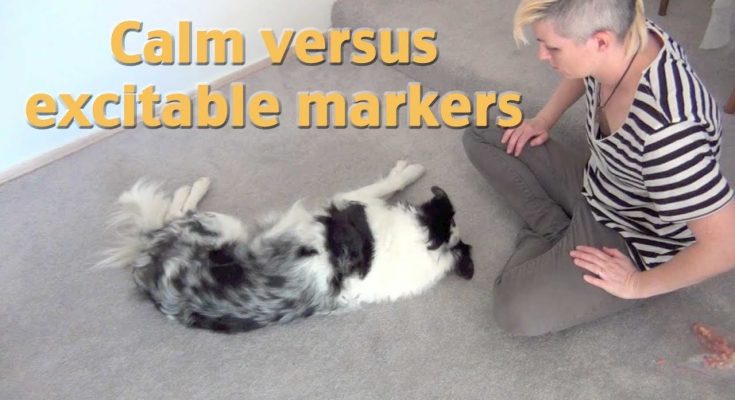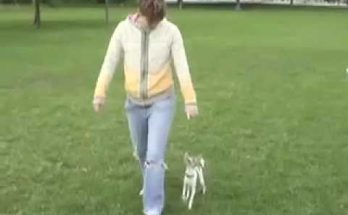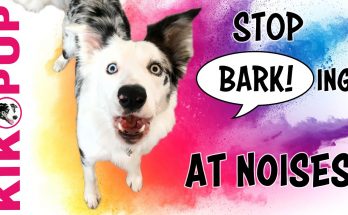My lovely mentor Kyle Rayon, taught me to use calm markers. I not only like to work on behavior modification but also activities with dogs that are very arousing- Canine Freestyle for example. Because I also love to train my dogs to be calm and relaxed in social environments, I found that by choosing my markers wisely, I could really speed up the training process and get the best of both worlds- Calm when not 'working' or as I would call 'playing' and the right level of arousal during training. This is another tip- your dogs cues can cause conditioned emotional responses too, so choose which cues you will use in different scenarios wisely! 🙂
I know that you think I have forgotten about creating a video- teaching an upsidedown settle and a video on trimming black nails, but I am STILL going to do them!!! haha, I just dont have as much time as I hoped for, and this video was a lot quicker to edit. SO I could slip this little nugget of information to you while you wait ever so patiently.





Thank you so, so much for this video. It never occurred to me that I could just make another marker. Instead I had stopped using my markers when I wanted to reinforce calm behaviors.
But no marker of course makes it harder for the dog to understand which behavior is being rewarded. I’m sure this will make a huge difference and hopefully make progress much easier.
That’s it – I am packing up and moving close to where you are and enrolling all my dogs in your training. SO inspirational!!! Thank you
Oh if I could only have you train here in Connecticut, my labs and I would be very happy. Thanks for your series of training videos! They are greatly appreciated and I have living proof with my labs that the system you subscribe to and teach works.
Did you post how to teach a dog to sneeze? If no, could you? Thanks!
Also, love your videos!
Zuzanna Szadkowska I used capturing to teach it. Mark the behavior when the dog does it, and over time the dog will offer it more often, and on purpose. Then you add your cue.
Would love that video on trimming black nails! And filing nails! and the importance of it!
Brilliant! I have always used a marker “yes” to go with reinforcement, I have never paid attention to the tone in my “yes”… I love this idea, because I DO have a reactive dog and I DO love agility. Simply great, thanks!
Interesting idea. For high-response markers, I use YES! When I want the dog to know it’s doing well but still say calm, I say “Good ______” in a calm, soothing tone, and hand a treat gently or pet. Like when trimming toenails, it’s “good stay” in a calm, quiet tone. Then when I’m done, I give the release and it’s HAPPYHAPPY and the dog gets a reward. I’ve never thought about marker training a quiet response. I just reinforce the good behavior when I ask for a quiet response and they give it. Definitely something for me to think about! 🙂
Exactly what t I needed to know for my easily aroused Doberman rescue, Ellie. Thank you.
Great illustration of this important concept in training! Great to highlight this, I just realised I do have clam vs exciting markers for Noch, I will just be more mindful/active/structured in how I use them from now on. I think I have just been using them “instinctively”/intuitivley up till now.
Hey Kikopup, great video, I’m just looking for some advice. My dog is a 2 year old Bull Terrier Mix, He’s a really great dog and very well behaved when I’m home or when my parents are home. The problem I have with him most is that when I leave home and leave him in the backyard he runs around the neighbor’s backyards and pulls out all their rubbish and grabs peoples shoes from other houses. This has resulted in many problems for me with the neighbors and my only other option would be to chain him up all day when I go out otherwise I would have to get rid of him and I don’t want to do either of those things. Is there a way I can teach him not to run away and stay in the yard? Please need help with this it’s urgent. thanks
Great idea, and well presented. Is there any research on using different values of rewards with different markers? I’m experimenting with using low-to-medium-value rewards for calm behaviors with my excitable and very food-oriented dog, like praise or a gentle pat, or plain kibble. I’ve seen that if I reward “settle” with something like cheese or hotdog, he’ll jump up and start throwing behaviors at me rather than staying settled. You can almost hear him thinking, “Whoa! Nobody told me that there were hotdogs around! What do you want for them? Just tell me!” I’m guessing that introducing a calm marker will help even more. Thanks!
This is a brilliant concept. Nice work!
Im a new puppy owner and you have taught me sooo many things. I can’t wait to start training him! Thank you for the videos, keep them coming! 🙂
This video was like a bright light from the sky for me! Thank you for the advice!
I don’t train dogs though, I clicker-train my horse, so I think it’s very important to have him calm in the stable for example, while in the paddock I want him having fun and being ready for work 🙂
とても勉強になります!
素敵な動画をありがとう、これからも見て勉強して愛犬達と楽しい毎日を送りたいと思います。
ありがとう!!
Thank you
This is a great tip!
Haha great idea. My pup gets sooo excited when she hears the click 🙂
The calm marker is getting harder with our Aussie pup, she is 8 months now and she did better at 3 months. We keep trying and praying a lot, I hope God hears me, never had a dog like this.
..going over ur videos I nearly forgot about this bit!Thank u Emily!
thanks 🙂
Hello. I’m very skeptical that this will work for my working line 9.5 month old German shepherd. He cannot
really care less about food outside. He just gets very excited/stressed/focused
on all distractions outside. He was not this before 5 month. He was the calmest
boy ever.
What he does care about and
will ignore everything is if I ask for engagement and the work is for his tug
toy. He will then instantly disengage everything. “Are you ready?” and he will
instantly look at me and I say “yes” and present at hidden tug toy and we play.
With food he doesn’t even bother looking at me. Most of the times even when he’s calm outside he rather
choose to sniff the bush than to look back and take piece of sausage.
I really want to take your course on reactivity or the 6 week leash walking. But considering my dog is muuuuuch more toy motivated I’m not sure how I can it work.